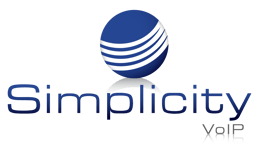Creating Custom Call Center Solutions to Delight Clients
Call-center solutions can efficiently manage customer communications and improve user experience. But the right call-center solution can empower sales and customer service teams to create personalized, real-time customer conversations, increasing customer satisfaction and loyalty.
.jpg?width=800&height=533&name=berkeley-communications-WEDDt-u3q3o-unsplash%20(1).jpg) When looking for a call-center solution, consider the specific needs of your clients, and look for the features and functionality that will best serve them. Creating a customer experience that delights clients is integral to getting and keeping customers.
When looking for a call-center solution, consider the specific needs of your clients, and look for the features and functionality that will best serve them. Creating a customer experience that delights clients is integral to getting and keeping customers.
Identify KPIs
Identifying key performance indicators (KPIs) provides a window into customer satisfaction and agent performance, making it easier to identify weak spots within the call center. By identifying the right KPIs, companies can better understand their call center's performance and make data-driven decisions to improve customer satisfaction and overall business success.
-
First Call Resolution (FCR) - This metric measures the percentage of calls resolved on the first call. A high FCR rate indicates that agents can effectively handle customer inquiries and resolve issues quickly.
-
Customer Satisfaction Score (CSAT) - This metric measures customers' satisfaction with their interactions with the call center. A high CSAT score indicates that customers are happy with the service they received and are more likely to return as repeat customers.
-
Average Handle Time (AHT) - This metric measures the average time it takes for an agent to handle a call from start to finish. A low AHT indicates that agents can handle calls efficiently and effectively.
-
Abandonment Rate - This metric measures the percentage of disconnected calls before being answered. A low abandonment rate indicates that customers are getting through to agents promptly and that the call center has adequate staffing levels.
Not all metrics are created equal, and it's essential to focus on the ones that align with the company's business objectives. Identify the important ones to your business, and focus on them.
Choose the Right Tools
Building a quality assurance (QA) program in a call center evaluates and improves the call center's performance, identifying areas for improvement and ensuring agents provide high-quality service to customers.
Here are some steps that can be taken to build a quality assurance program:
-
Define Call Center Goals: The first step in creating a QA program is to define the call center's goals. These goals should align with the company's overall business objectives and KPIs and be specific, measurable, and achievable.
-
Train Call Center Agents: Agents are the company's front-line representatives and must have the necessary skills and knowledge to provide high-quality service to customers. Training should include technical skills, such as product knowledge, and soft skills, such as communication and problem-solving.
-
Record Calls and Monitor: Recording and monitoring calls allows managers to evaluate agent performance and identify areas for improvement. It also identifies common customer issues and will enable you to develop solutions to address them.
-
Evaluate and Analyze Data: The data collected from monitoring and recording calls should be analyzed to identify patterns and trends. This information helps you make data-driven decisions to improve the call center's performance.
-
Implement Changes and Improvements: Based on the data collected and analyzed, changes and improvements should be implemented to improve the call center's performance.
A quality assurance program helps companies ensure that agents provide high-quality service to customers and that the call center meets its goals and objectives. This leads to higher customer satisfaction, increased customer loyalty, and overall business success.
Customize Solutions
Customizing solutions tailors your call center to meet the client's specific needs. This can include solutions like multilingual support, offering multiple communication channels, and developing custom agent scripts.
Some ways to customize your call center:
-
Multilingual support: Companies that serve a diverse customer base should offer multilingual support. This can include hiring agents fluent in multiple languages and providing translated scripts and materials for agents to use when interacting with customers.
-
Communication channels: Companies can customize solutions by providing omnichannel options for customers to use when interacting with the call center. This can include options such as phone, email, and live chat.
-
Custom scripts for agents: Companies can create custom scripts for agents to use when interacting with customers. These scripts can be developed to align with the company's goals and objectives and tailored to specific customer segments or industries.
-
Self-service options: Companies can also customize solutions by providing self-service opportunities, such as automated self-service IVR (Interactive Voice Response) systems that help customers quickly resolve their issues without needing an agent.
-
Chatbot integration: Companies can also integrate chatbots into the call center to provide 24/7 customer service and help customers with simple queries, reducing the burden on agents and improving the customer experience.
By customizing solutions for a call center, companies can ensure that they are meeting the specific needs of their clients and providing a positive customer experience. This leads to higher customer satisfaction, increased customer loyalty, and overall business success.
Creating custom call-center solutions can help your business improve customer satisfaction and increase loyalty. Considering onsite support, VoIP technology, and call recording, you can create a call-center solution that will delight your clients.



.jpg?width=352&name=cdc-_XLJy3h77cw-unsplash%20(1).jpg)
%20(1).jpg?width=352&name=arlington-research-kN_kViDchA0-unsplash%20(2)%20(1).jpg)